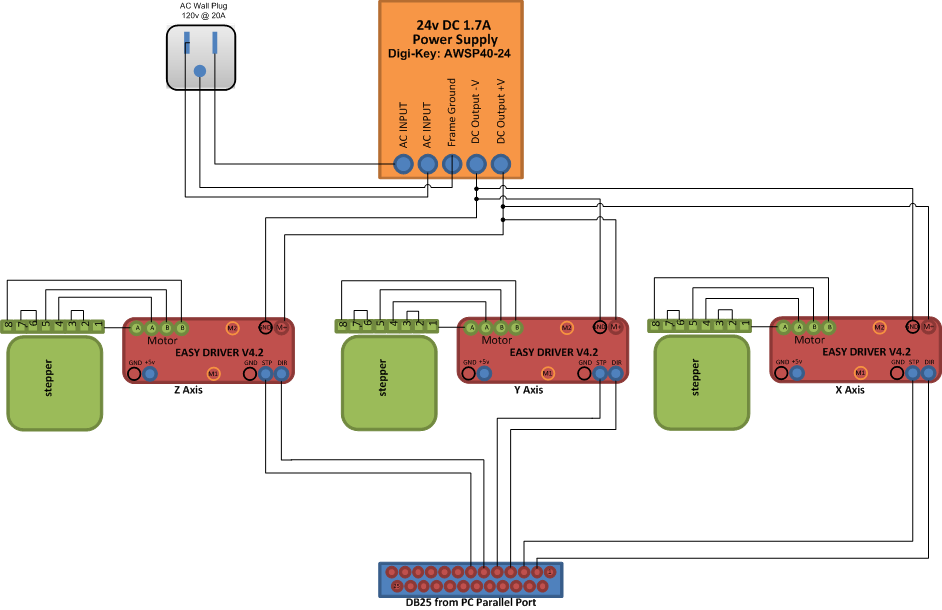- Tue Nov 24, 2009 9:04 pm
#85881
That's great news. A few questions:
Are the motor wires soldered to the ED or are they just sort of wedged in the holes? I can't tell from your picture how the breadboard is being used.
How fast are you turning the motor? Steppers produce more torque at low speeds, so it's good to get it working at slow speeds first, then slowly crank up the speed to see when it starts skipping steps.
Is the Y-axis pretty easy to turn by hand?
Do you have the current on the ED set to the max? There's a pot near where the motor wires connect that you can turn with a small screwdriver to adjust the current.
You can connect two ATX supplies together to get 24 volts, but it's a bit dodgy -- you have to disconnect the ground on one of the supplies, which could allow its case to shock you if some of the components inside fail. Higher voltage will improve its performance at high speeds, but shouldn't make much of a difference at low speeds. See how far you can get with 12V first..
Are the motor wires soldered to the ED or are they just sort of wedged in the holes? I can't tell from your picture how the breadboard is being used.
How fast are you turning the motor? Steppers produce more torque at low speeds, so it's good to get it working at slow speeds first, then slowly crank up the speed to see when it starts skipping steps.
Is the Y-axis pretty easy to turn by hand?
Do you have the current on the ED set to the max? There's a pot near where the motor wires connect that you can turn with a small screwdriver to adjust the current.
You can connect two ATX supplies together to get 24 volts, but it's a bit dodgy -- you have to disconnect the ground on one of the supplies, which could allow its case to shock you if some of the components inside fail. Higher voltage will improve its performance at high speeds, but shouldn't make much of a difference at low speeds. See how far you can get with 12V first..

